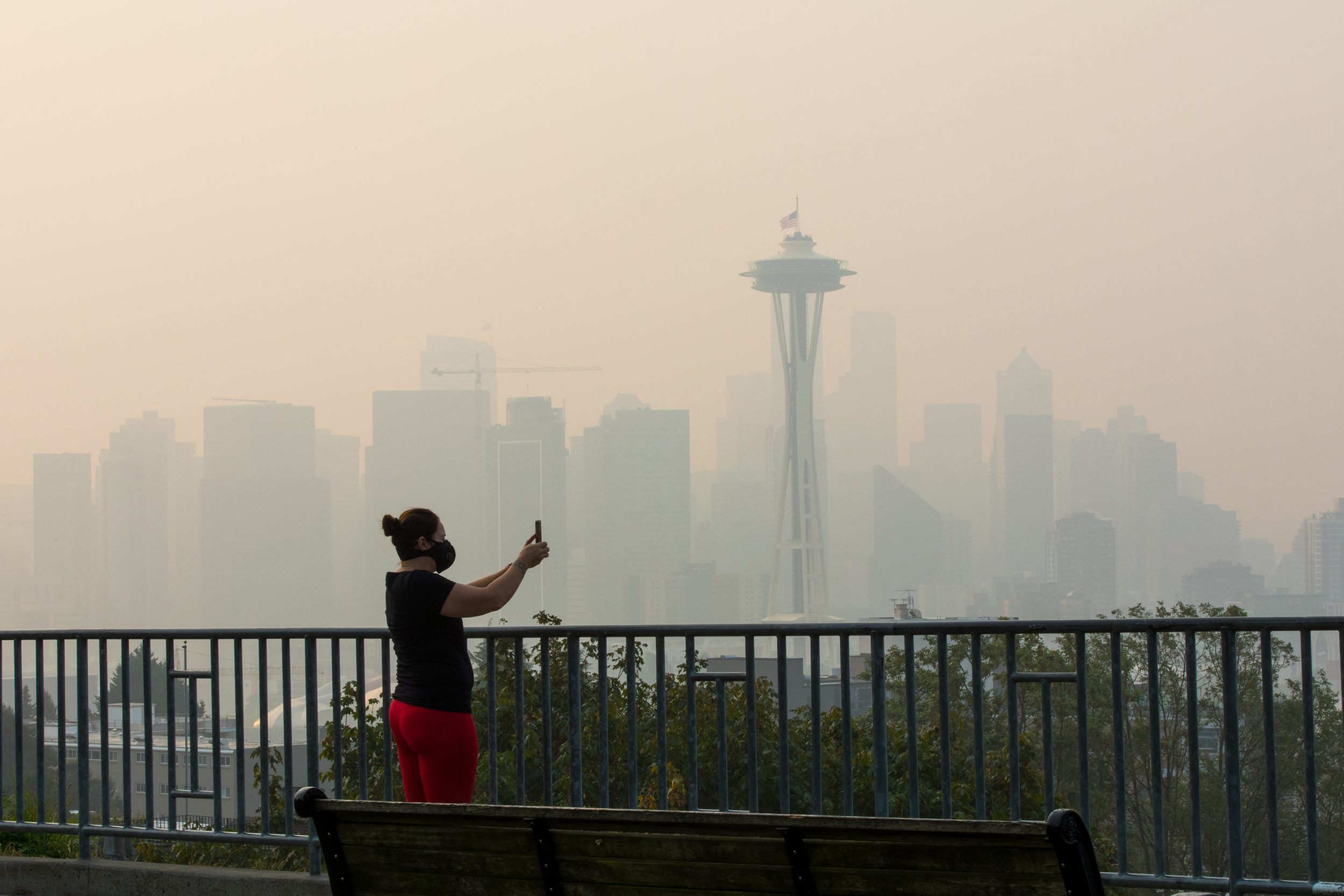They’ll have to incorporate strategies to cut emissions and better withstand natural disasters and severe weather into their long-term plans.
By Laurel Demkovich, Washington State Standard, July 24, 2023
Planning for severe storms, flooding, wildfires and poor air quality will soon be required for Washington cities and counties.
A new law passed by the Legislature this year requires local governments to consider climate change in their 20-year comprehensive plans beginning in 2025. The Department of Commerce released early guidance last month for how to do that.
The guidance focuses on two new sections that must be included in long-range plans: lowering greenhouse gas emissions and raising defenses against climate-related threats. With the law, the state isn’t mandating that the localities meet specific emissions targets, just that they commit to strategies that can help with reductions.
Sarah Fox, climate program manager for the Department of Commerce, said climate change has affected the state in many ways in recent years. The guidance helps cities and counties reduce their impact on the planet as well as improve their ability to withstand the harsher effects of climate change, she said.
“A more resilient city means you’re not suffering the effects of poor planning,” she said.
The new requirements came out of a controversial bill that passed the Legislature last session. Along with adding a climate element, the state’s 11 largest counties and their cities with populations greater than 6,000 people must update their transportation and land use plans.
The bill passed 57-41 in the state House of Representatives and 29-20 in the state Senate.
During floor debates, Republicans argued that the policy would stifle growth and hinder housing construction.
“It adds bureaucracy, it slows us down, it adds cost, and it goes in absolutely the wrong direction for our state,” Senate Minority Leader John Braun, R-Centralia, said back in April.
But supporters said the proposal would help cities grow sustainably amid a changing environment. Sen. Liz Lovelett, D-Anacortes, said it was an opportunity to create “a meaningful blueprint” for the future that all residents deserve.
The greenhouse gas emissions and resilience requirements can be met in a number of ways, and Commerce gives jurisdictions examples for how to incorporate them into their plans.
They include things like reducing vehicle miles traveled, building denser housing near transit, expanding transit, developing more parks, and advancing environmental justice.
Fox said cities and counties have to provide an update in five years with any progress they’ve made toward implementing their climate plans, including any vehicle-miles-traveled goals. That will allow the state to see if voluntary targets set by local jurisdictions are working, and whether making those required at the state level would be a way to move forward.
Some counties already doing the work
Clark, Skagit, Thurston and Whatcom counties are the first counties to have to follow the requirement in 2025. The other counties are gradually added over the years.
According to the Municipal Research and Services Center of Washington, most jurisdictions have some type of plan or document attempting to address emissions and climate issues.
Some have full climate action plans that include goals for emissions reductions and how to improve climate resilience. In the new guidance, Commerce pointed to Spokane, King and Thurston counties climate action plans as examples that other jurisdictions can follow.
Other counties, such as Benton, Franklin and Clark, only have documents, often a hazard mitigation plan, that references climate change and greenhouse gas emissions. But these plans don’t necessarily include steps for addressing emissions or climate hazards.
Those counties will likely be starting from scratch when it comes to adding a climate element.
Clark County is one of them.
Jenna Kay, from the county’s Community Planning Department, told the County Council last month that they may be able to use some of their existing policies to meet the new requirements. Councilors agreed that they wanted to be creative in how they comply and indicated that they wanted to use as few resources as possible. Still, Kay said creating the new element will take a lot of organization and coordination.
“This bill is cutting across a lot of topics and a lot of different pieces of the comprehensive plan,” she said.
For counties and cities that may need to do more work on their plans, Commerce is making grants available that jurisdictions could use to hire planners, contract workers, do outreach and more. There will be about $30 million distributed over the next six years to help with this.
FEATURED IMAGE: In 2020, Jennifer Dravage of Seattle photographs the wildfire smoke obscuring the skyline in a view from Seattle’s Kerry Park.
Washington State Standard is part of States Newsroom, a network of news bureaus supported by grants and a coalition of donors as a 501c(3) public charity. Washington State Standard maintains editorial independence. Contact Editor Bill Lucia for questions: info@washingtonstatestandard.com. Follow Washington State Standard on Facebook and Twitter.



